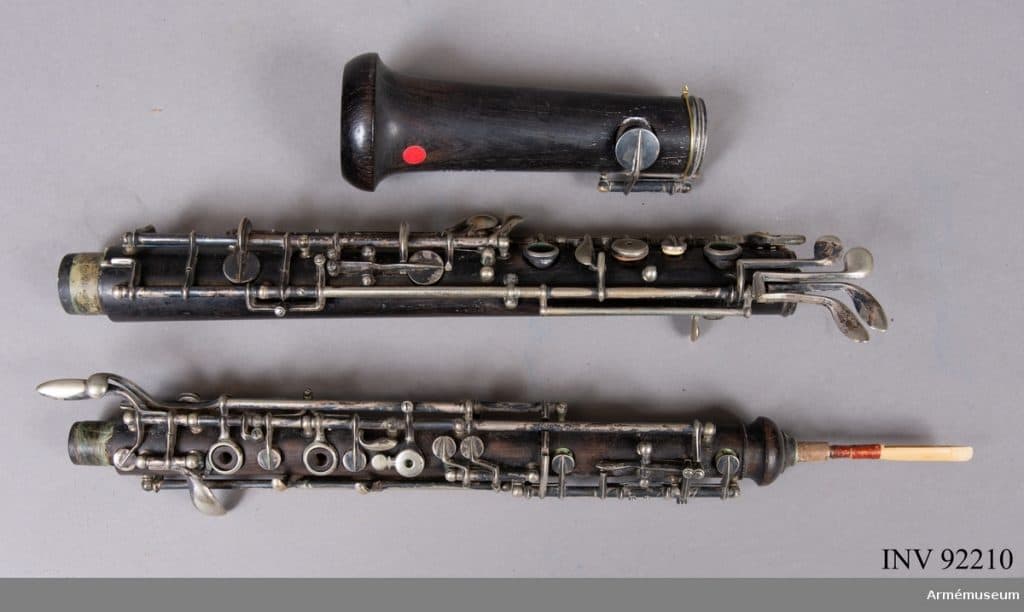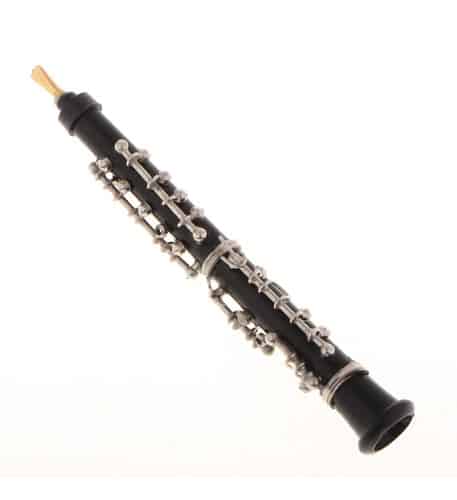Improve Your Oboe Technique
The best way to transform your oboe technique
Are you currently wanting to improve your oboe playing? Then technique is one thing you need to be focusing on first. An effective technique is at the basis of any brilliant player. It’s not possible to have an amazing oboe player without having an amazing technique. As an element of our ‘Beginner’s Guide To Learning The Oboe’, hopefully, this part on technique will help you develop simply and quickly.

Daily Exercises
Many exercises are essential to gain a proper technique. Once you master these exercises, you’ll be able to play almost anything. That sounds like a grand statement – but don’t underestimate the word ‘master’!
If you work enough, you’ll be able to look at a section of music and be confident enough to learn it quickly. For each exercise, there is a specific way to practice it. Your practice is only as good as your form while you practice. So be disciplined about it, as practising exercises wrong is a complete waste of time! We have three key exercise categories that will help you…

1. Air Support
Wind players talk a lot about using air support. By this, we mean engaging with the abdominal muscles which in turn control the diaphragm and help us maintain a steady stream of air from the base of our lungs, up and out, down the instrument.
Ex.1 – To connect with these muscles, stand or sit up straight, put one hand on your middle and try laughing or coughing. You can feel this muscle contracting and feel the power it has. This will help you when playing the oboe.
Ex.2 – Audibly ‘sigh’, so that you breathe out fully. Now play a note on the oboe, actively squeeze out the last bit of air from your lungs using your diaphragm. Surprising isn’t it? We never normally empty our lungs totally, but on the oboe, it can be really helpful to know that we can still produce a sound on such a tiny amount of air. That’s why we can play such long phrases. We just have to stay calm and make the air last for as long as possible, engaging with our support muscles all the time.
Ex.3 – On a long sustained note, use your support muscles to push more air down the oboe to make a crescendo. Do you feel it working? Stay relaxed. Pushing more air down the oboe might result in increased tension, but actually think of it as a broadening of the air column. (The laser beam of sound is widening!) Staying open and relaxed in the embouchure (and throat) will also stop the pitch going sharper as you get louder.
Ex.4 – Now imagine that laser beam getting narrower, for a diminuendo. The speed of the air and the support needs to be just as strong, but the volume of air is reducing. Again, don’t squeeze the lips as you get quieter. The lips being more cushioned actually helps to mute the sound a little.
Ex.5 – Try starting notes without any articulation, just let the air do it. Have your embouchure and support muscles ready before you want the note to start. This works best on middle and upper range notes. It feels strange at first, but remember it is a wind instrument – it is the air that starts the note, not the tongue. As soon as you let go of that imbalance, you’ll discover more stable and confident sound production.
Ex.6 – Now try crescendoing on one note and then slur up, to land on the next note a semitone higher, and diminuendo on that one. Notice if the air support faltered. It’s important to keep the airflow the same even when your fingers have moved. Working on smooth semitone steps at first (up and down), and then building up to leaps and runs will gradually help you iron out any lumps and bumps in the sound.
Using better air support will solve many issues and take the pressure off the lip muscles doing all the work. It will improve your sound quality, intonation, articulation, dynamic range, sound production, vibrato (for more advanced players), and general confidence. Worth a go!
2. Lip Flexibility
It’s important to keep our lips flexible so that we can adjust to different reeds, do fine-tuning and prepare for leaps to the extreme high and low registers of the oboe.
It’s easy to hold too much tension in our lips, especially when they’re tired. When you’re warming up and squeaking the reed alone, try gently rolling the reed in and out of your mouth a little just using your lip muscles. You’ll hear the pitch bend up and down as you do this. This rolling can’t happen if you’re squeezing, so it’s really useful to start your practice off doing this.
Then you can use this flexibility when you’re playing, for example – to help tuning in the upper register, and for leaping down to the lowest notes.
3. Fingerwork
If you’re having trouble with finger coordination or playing fast passages, here are some exercises to help train those muscles.
The first place to start is by becoming familiar with all the major and minor scales and arpeggios.
Ex.1 – For music exams, you’ll mostly be playing from tonic to tonic, but I would suggest extending the range to as high and as low as you can go within that scale and back to the starting tonic (like a musical snake!) as this will be more relevant to the pieces you’ll want to learn.
Ex.2 – Then there are dominant 7th, diminished 7th, whole-tone scales, chromatic scales, scales in 3rds or 4ths (etc) to try. These are great to mix into your warm-ups. Choose a small selection each day and then a different set next time. You could create your own practice chart, or have them each written down on pieces of paper to make a lucky dip for yourself.
Ex.3 – Instead of always thinking of the notes in groups of pairs or triplets, why not try an irregular pattern such as quintuplets? You could then shift the beat to one note later so that your starting note becomes an upbeat. You’ll be surprised at how strange this feels at first, but once you let go and trust your fingers, it will really neaten them up.
Ex.4 – Now try incorporating a different rhythm into the scale. Do combinations of quavers and semiquavers, dotted rhythms, triplets, syncopations. This will break you out of some habits and be a good mental workout as well as a physical one. (Then once the fingers are warmed up, add different articulations as well!)
4. Articulation

We can use quite a range of articulation on a wind instrument – just think how incredible our tongue is! This versatile muscle allows us to say so many different vowels and consonants when we speak, and we can use many of these functions directly on the oboe.
The clearest way to articulate a note is to use the letter ‘T’ when playing (i.e. ‘Tuuuuuuu’). You’ll probably be very used to doing this from your early days of learning to play.
The most precise and crisp version of ‘Tu’ will create staccato notes. This combined with extra force and airspeed will give you options for playing different accents. Double reed instruments are fantastic at playing detached and accented notes, something which composers have taken advantage of in their quirky lively musical moments.
If you want to improve your fast tonguing, remember that as with all muscles, if you want it to move faster, you can’t do it with tension. You actually have to relax. Try clapping as fast as you can with your hands and arms being as tense as possible. They get tired very quickly. Now try it again without the tension. It feels easier right?
On the oboe, the air flow can actual help the tongue move faster. Like a leaf blowing in the wind. So try, just with the air, no oboe, saying ‘tutututututututu’ on an outward breath. Relax the tongue, just let the tip of it do the minimum movement, with the sound being pushed out by the air stream. Now try this on the reed alone. There’s more resistance to blow against but aim for the same efficiency of movement. Now on the oboe, just one note. With regular practice, that’ll get easier and faster, and you’ll be able to do this whilst changing notes and rhythms too.
But for gentler articulations, why not experiment with using the letters ‘D’, ‘L’ and even ‘N’. Keep supporting the air and experiment using the tongue in these subtly different ways.
For upper notes on the oboe you could even comfortably begin a phrase without any articulation at all, just letting the air flow start the note (as in the exercise earlier on). The sound will practically creep in – like magic!
5. Sound Quality
Having good air support will undoubtedly help your sound production and ease any tension in the whole air column (lips, jaw, throat, shoulders). To improve sound quality you need to consider the word ‘resonance’. We are pushing a lot of air down a very narrow passageway, which can’t adjust. Therefore we have to do all we can to broaden the air column and in turn, improve the sound quality.
Check where you hold tension as you play and consciously work to release this tension. The support muscles are the strongest and should be working the hardest. Don’t contain all the effort to your mouth. Let the air resonate in your whole torso as if you were an opera singer!
Perhaps experiment with making different vowel shapes inside your mouth. Instead of using just ‘oooo’, why not try ‘awwww’ for low notes, ‘eeeee’ for the upper register, and ‘aaaaaa’ (as if yawning!) if your sound is too sharp. You’ll hopefully hear a real difference.
We are part of our instrument. It doesn’t work without us. So we have to take control and manipulate it to get the sound we’re aiming for.
6. Reed Adjusting

Most beginner reeds have wire on which helps for adjusting them to suit your preferences. Only make adjustments when the reed has been soaked. When it’s dry, it is brittle and will easily crack.
If it’s hard to make a sound and too much air is flowing but without making much vibration, it’s probably too open. Gently squeeze the flatter sides of the wire together to close the reed down a little.
If there’s not enough air flowing through and only a small high squeak, it’s probably too close for you. So gently squeeze the edges of the reed at the wire to open it up.
Being in its box will make the reed settle to however the temperature and humidity make it, so it’s very normal to have to soak and adjust the reed at the start of your practice. As a guide, you’ll want the reed to have an opening of about 0.5-1.0mm.
Your teacher should be able to help with further adjustments and scraping. Then one day if you become an advanced enough player, you might like to get some tools and learn for yourself!
To test how well a reed is vibrating, roll it slightly further into your mouth than the normal position, and blow. You should hear that instead of one single pitched squeak, it’ll make a split multi-phonic type noise we call a ‘Crow’. This crow can tell us if there’s a good range of upper, middle and lower tones within the cluster to ensure it’s vibrating well throughout. If it’s mostly higher or lower pitches, that helps determine which fine adjustments are needed.
As your lip and support muscles get stronger you’ll be able to move onto slightly thicker reeds. This will give you better sound quality and more stability with tuning. I wouldn’t advise going too hard though as this will cause too much strain on your lips, limit your flexibility and control, and ultimately be exhausting to play on.
Reeds can be temperamental. A box of identical-looking reeds will in fact be quite varied. A bad one might get better with more playing. A good one might get chipped and never be the same again. They can feel different from day to day, and they unfortunately do not last forever. My advice is, be flexible and learn to cope with what you have. Always have options and spares, and save the best ones for performances.
Improve Your Oboe Technique - Summary
Oboes can be tricky beasts at times. They might not work exactly as you expect 100% of the time, so just accept that, and be patient with yourself. The joy of progressing and doing something that not many people can do will be incredibly rewarding though. And ultimately it’s the musicality and enthusiasm that people remember about your playing, not the faults.
To connect with the wider community of oboe players around the country, there are several groups to look up…..
British Double Reed Society
International Double Reed Society
Big Double Reed Day
Facebook groups – Oboes of London, Oboists in the world
About the Author
Katie Bennington
Katie Bennington enjoys a varied freelance career playing regularly with orchestras around the country such as the London Symphony Orchestra, Royal Philharmonic Orchestra, Aurora Orchestra, ENO, ENB, and CBSO. She is also a keen chamber musician and enjoys working in collaboration with artists from different genres.
She is a Masters graduate of the Guildhall School of Music and Drama where she studied oboe with Richard Simpson, Gordon Hunt and David Walter, and cor anglais with Jane Marshall. She then went on to take part in the LPO's Foyle Future Firsts Scheme and in 2010 was a member of Southbank Sinfonia. She was a British Double Reed Society prize winner at the Barbirolli International Oboe Festival and Competition in 2009. At GSMD she was a Needlemaker’s Woodwind Prize Finalist in 2008, and in Dec 2007 she won the Slaughter and May Musician of the Year Award. She plays on a Sound Alchemy Enigma oboe and a Loree Royal cor anglais.
Other posts by this author
She is a Masters graduate of the Guildhall School of Music and Drama where she studied oboe with Richard Simpson, Gordon Hunt and David Walter, and cor anglais with Jane Marshall. She then went on to take part in the LPO's Foyle Future Firsts Scheme and in 2010 was a member of Southbank Sinfonia. She was a British Double Reed Society prize winner at the Barbirolli International Oboe Festival and Competition in 2009. At GSMD she was a Needlemaker’s Woodwind Prize Finalist in 2008, and in Dec 2007 she won the Slaughter and May Musician of the Year Award. She plays on a Sound Alchemy Enigma oboe and a Loree Royal cor anglais.
Be part of The 4-Feature Friday Email
Did you lose out last Friday? It only occurs once per week, and unless you’re signed up, you’ll not read about the incredible items I’ve found for you this week.
At the end of each week, I’ll send you an email with all the interesting items I’ve found.
It could literally be about anything to do with music. It’ll end up in the e-mail if I believe you’ll think it’s great!
To be able to tour the world means I’ve encountered stuff I’d never imagine. And that’s what I’d like to share with you. So simply click below to get entry right now.
Read the next post in this series:




